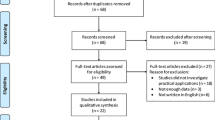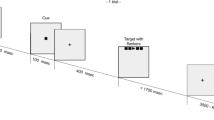Abstract
We analyzed shifts in the functional parameters of the autonomic and segmental somatic reflex mechanisms in various categories of people subjected to irradiation because of the catastrophe at the Chernobyl’ NPS. It is demonstrated that long-lasting irradiation even with mild intensity evokes serious damage to the central structures controlling autonomic functions (first of all, the hypothalamus). This results in the development of autonomic dysfunction with domination of disorders of the sympathetic system manifested in a dramatic drop in the amplitude, an increase in the duration, and modification of the phase structure of evoked autonomic skin responses in all examined groups of persons. Cardiovascular and neurotrophic disorders are crucial factors, which determine pathological modifications in the somatic reflex sphere (a drop in the amplitude of sensory evoked potentials and a decrease of the conduction velocity in the peripheral nerves, a drop in the amplitude of M responses in the limb muscles, but with relatively small shifts in the synaptic relays of segmental reflex arcs).
Similar content being viewed by others
References
Mental Health Consequences of the Chernobyl Disaster. Current State and Future Prospects, Proceedings of International Conference, Khreshchatyk, Kyiv (1995).
International Conference on Health Consequences of the Chernobyl and Other Radiological Accidents, WHO, Geneva (1995).
International Conference “One Decade after Chernobyl,” Book of Extended Synopses, IAEA, Vienna (1996).
International Conference on Radiation and Health, Beer Sheva, Israel (1996).
NATO Advanced Research Workshop on Ocular Radiation Risk Assessment in Populations Exposed to Environmental Radiation Contamination, Kyiv (1997).
2nd International Conference “Long-Term Health Consequences of the Chernobyl Disaster,” Kyiv (1998).
A book review by A. K. Gus’kova, V. G. Lelyuk, and T. G. Protasova,Afterirradiation Encephalopathy: Experimental Studies and Clinical Observations, A. P. Romodanov (ed.), Kyiv (1993),Med. Radiologiya Radiats. Bezopasnost’,41, No. 3, 70–73 (1996).
A. K. Gus’kova, “Ten years after the ChNPS catastrophe (a retrospective of clinical events and measures for corrections of the consequences),”Med. Radiologiya Radiats. Bezopasnost’,42, No. 1, 5–12 (1997).
F. S. Torubarov, “Results and tasks of clinical studies in radiational neurology,”Med. Radiologiya, No. 8, 29–31 (1991).
E. A. Vashchenko, A. I. Nyagu, B. A. Brous, and D. A. Vasilenko, “State of the Somatic Segmental Reflex Mechanisms in Humans Subjected to Irradiation in the Chernobyl’ Nuclear Catastrophe,”Neirofiziologiya/Neurophysiology,29, No. 2, 83–92 (1998).
E. A. Vashchenko, A. I. Nyagu, B. A. Brous, and D. A. Vasilenko, “State of the Autonomic Reflex Mechanisms in Humans Subjected to Irradiation in the Chernobyl’ Catastrophe,”Neirofiziologiya/Neurophysiology,30, No. 1, 1–13 (1998).
W. Janig and H. Kummel, “Functional discrimination of post-ganglionic neurones to the cat’s hindpaw with respect to the skin potentials recorded from the hairless skin,”Pflugers Arch.,371, 217–225 (1977).
W. Janig, G. Sundlof, and B. G. Wallin, “Discharge patterns of sympathetic neurons supplying skeletal muscle and skin in man and cat,”J. Auton. Nerv. Syst., No. 7, 239–257 (1983).
V. I. Skok and A. Ya. Ivanov,Natural Activity of the Autonomic Ganglia (in Russian), Naukova Dumka, Kyiv (1989).
A. M. Vein and A. B. Danilov, “Diagnostic importance of a cutaneous sympathetic potential,”Zh. Nevropatologii Psykhiatrii,92, No. 5, 3–7 (1992).
A. Mikhailenko, M. M. Odyinak, Yu. S. Ivanov, et al., “Regularities in modifications of evoked cutaneous autonomic potential in diseases of the nervous system,”Zh. Nevropatol. Psykhiatrii,97, No. 4, 58–61 (1997).
H. Bostock, D. Burke, and J. P. Hales, “Differences in behaviour of sensory and motor axons following release of ischaemia,”Brain,117, No. 2, 225–234 (1994).
D. L. Hammond and T. L. Yaksh, “Peripheral and central pathways in pain,”Pharmacol Ther.,14, No. 3, 459–475 (1981).
Yu. P. Limanskii,Physiology of Pain [in Russian], Zdorov’ya, Kyiv (1981).
J. Verdugo, M. Campero, and J. Ochoa, “Phentolamine sympathetic block in painful polyneuropathies. Further questioning of the concept of sympathetically maintained pain,”Neurology,44, No. 6, 1010–1014 (1994).
V. A. Baraboi and D. A. Sutkovoi, “Indices of oxidative metabolism in brain tissue of rats: the effects of acute low-dose radiational influences,”Neirofiziologiya/Neurophysiology,27, No. 2, 93–99 (1995).
L. M. Ovsyannikova, S. M. Alyokhina, A. F. Protas, et al., “Role of activation of the processes of lipid peroxidation in pathogenesis of psychosomatic diseases in person subjected to Chernobyl’ catastrophe-related factors,” in:Mental Health Consequences of the Chernobyl Disaster. Current State and Future Prospects (Proceedings of the International Conference) [in Russian], Khreshchatyk, Kyiv (1995), p. 60.
D. A. Sutkovoi, B. A. Baraboi, and S. A. Oleinik, “Metabolism in rat brain tissues: effects of prolonged low-dose x-ray irradiation,”Neirofiziologiya/Neurophysiology,27, No. 4, 243–252 (1995).
L. A. Gromov,Neuropeptides [in Russian], Zdorov’ya, Kyiv (1992).
L. I. Lyasko, G. N. Sushkevich, A. F. Tsyb, et al., “Dynamics of the contents of hypophyseal hormones, neuropeptides, and neurotransmitters in people directly involved in the cleanup and repair after the catastrophe. An attempt to correct with chlorella E-21,”Med. Radiologiya Radiats. Bezopasnosi’,39, No. 4, 22–25 (1994).
Author information
Authors and Affiliations
Rights and permissions
About this article
Cite this article
Vashchenko, E.A., Nyagu, A.I. & Brous, B.A. Neurophysiological mechanisms of neurological disorders in people irradiated in the Chernobyl’ catastrophe. Neurophysiology 30, 353–358 (1998). https://doi.org/10.1007/BF03027677
Issue Date:
DOI: https://doi.org/10.1007/BF03027677




